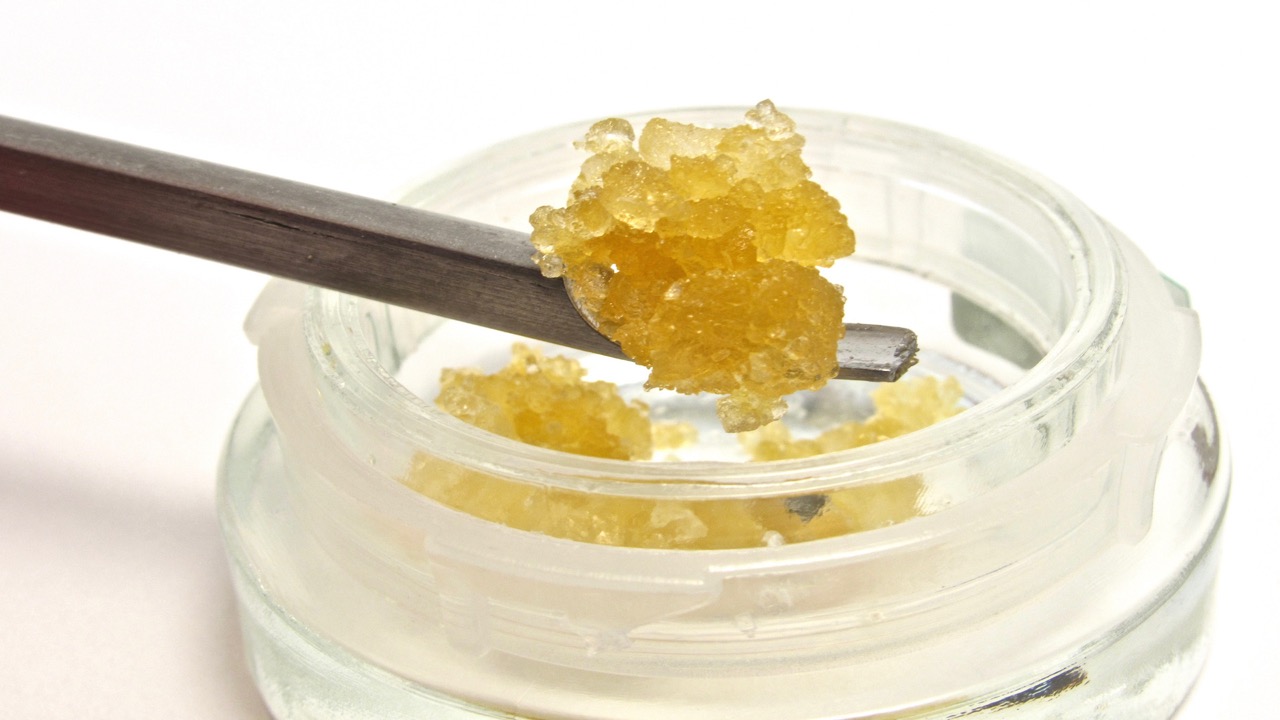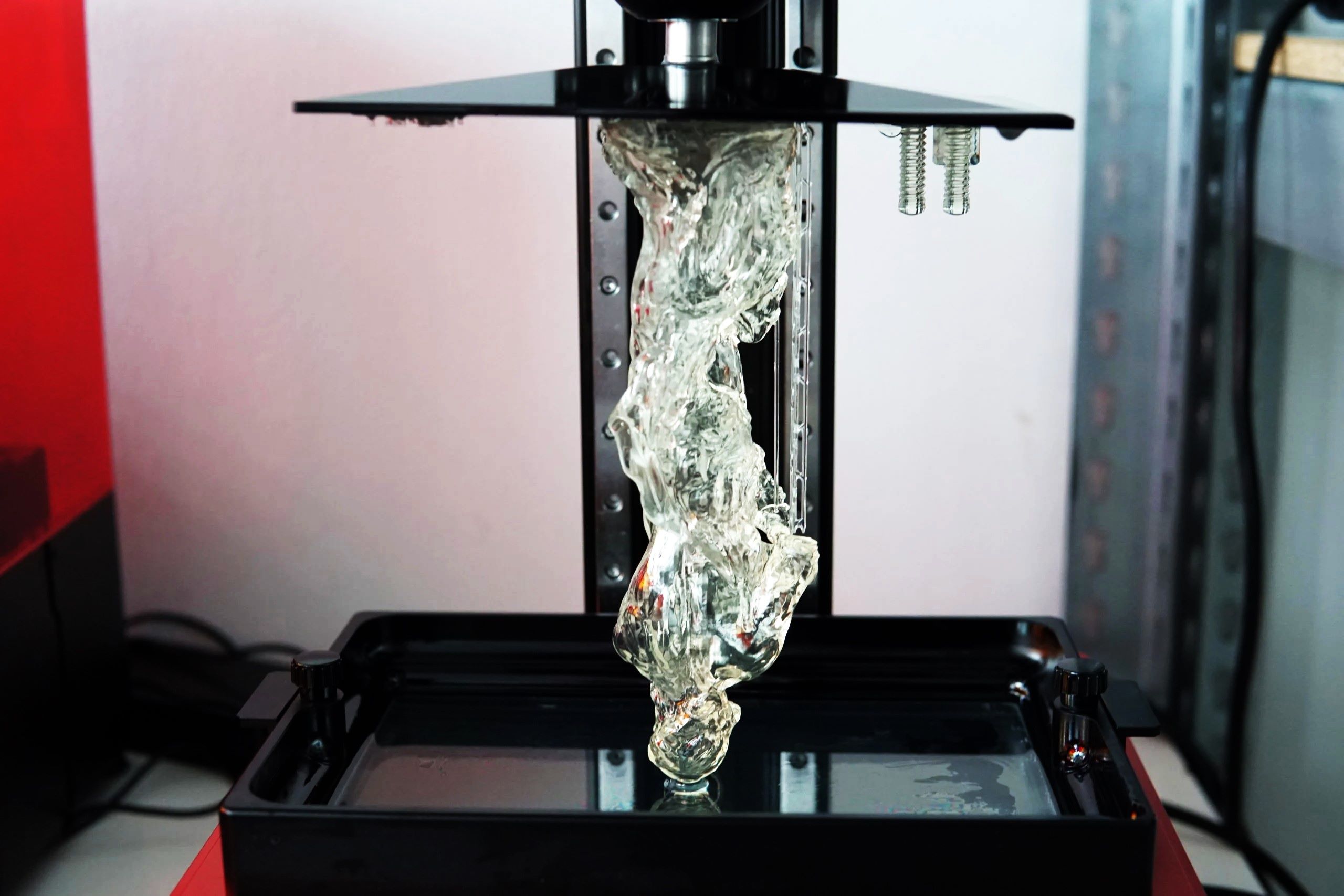

Articles
How To Store Live Resin
Modified: February 7, 2024
Discover the best methods for storing live resin to maintain its potency and freshness. Read our informative articles for expert tips on preserving the quality of your live resin.
(Many of the links in this article redirect to a specific reviewed product. Your purchase of these products through affiliate links helps to generate commission for Storables.com, at no extra cost. Learn more)
Introduction
Welcome to the world of live resin! This powerful cannabis concentrate is highly sought after for its potent effects and rich flavor profiles. However, to truly enjoy the full potential of live resin, proper storage is crucial. In this article, we will explore the ins and outs of storing live resin, including the factors that affect its quality, best storage practices, and tips for long-term preservation.
Before diving into the storage details, let’s first understand what live resin is. Live resin is a type of cannabis concentrate that is made by extracting cannabinoids and terpenes from freshly harvested cannabis plants. What sets live resin apart from other concentrates is its unique production process. Unlike other concentrates that are made from dried and cured cannabis, live resin is made from plants that have been flash-frozen immediately after harvesting. This helps to preserve the delicate aromatic compounds, resulting in a concentrate that captures the true essence of the plant.
Now that we know what live resin is, let’s move on to the factors that can affect its quality during storage. The most important factors to consider are temperature, humidity, light exposure, contamination, and labeling. By understanding these factors and implementing proper storage techniques, you can ensure that your live resin remains fresh, potent, and flavorful.
In the next sections of this article, we will delve deeper into each of these factors, providing you with valuable tips and guidance on how to store live resin effectively. Whether you are a seasoned cannabis enthusiast or a novice exploring the world of concentrates, this article will equip you with the knowledge you need to optimize your live resin storage practices.
Key Takeaways:
- Proper storage of live resin is crucial for preserving its potency, flavor, and overall quality. By understanding key factors and implementing best practices, you can ensure a superior and long-lasting experience when enjoying this exquisite cannabis concentrate.
- Choosing the right container, controlling temperature and humidity, protecting from light, avoiding contamination, and proper labeling are essential for maintaining the freshness, potency, and flavor of live resin. These practices ensure an exceptional experience with every use.
Read more: How To Anchor A Resin Shed
Understanding Live Resin
Before we delve into the intricacies of storing live resin, it’s important to have a clear understanding of what it is and why it’s so highly regarded by cannabis enthusiasts. Live resin is a type of cannabis concentrate known for its exceptional flavor and potent effects. What sets it apart from other concentrates is the unique production process.
Unlike traditional concentrates, which are made from dried and cured cannabis flowers, live resin is created using freshly harvested plants that are immediately flash-frozen. This rapid freezing process helps to preserve the cannabinoids and terpenes present in the plant at the time of harvest, resulting in a concentrate that captures the full spectrum of flavors and aromas.
The main reason why live resin is so revered is the presence of terpenes. Terpenes are organic compounds found in cannabis that give each strain its distinct fragrance and flavor. They work synergistically with cannabinoids like THC and CBD to produce the desired effects of a particular strain.
During the traditional curing process, many of these valuable terpenes are lost or degraded, resulting in a less flavorful and less potent concentrate. However, with live resin, the flash-freezing technique helps to preserve those terpenes, allowing for a more robust and flavorful concentrate.
When properly stored, live resin can maintain its potency, flavor, and aroma for an extended period of time. By understanding the factors that affect its quality and implementing proper storage techniques, you can ensure that your live resin provides an exceptional experience every time you indulge.
In the next sections, we will explore the various factors that can impact the quality of live resin during storage and discuss best practices to keep it fresh and flavorful. From temperature and humidity control to avoiding contamination and labeling, we’ll cover all the essential aspects of storing live resin effectively.
Factors Affecting Live Resin Storage
Proper storage of live resin is crucial to preserve its quality, potency, and flavor. There are several factors that can significantly impact the overall stability and longevity of live resin. By understanding these factors, you can take the necessary steps to ensure optimal storage conditions. Let’s explore the key factors that affect live resin storage:
- Temperature: Temperature is one of the most critical factors when it comes to storing live resin. Ideally, live resin should be kept in a cool environment with a consistent temperature. Excessive heat can cause the terpenes and cannabinoids in the resin to degrade, leading to a loss of flavor and potency. It is recommended to store live resin between 40-50°F (4-10°C) to prevent any deterioration.
- Humidity: Humidity levels can also have an impact on the quality and consistency of live resin. Excessive moisture can lead to mold growth, which can ruin the resin. On the other hand, low humidity can cause the concentrate to dry out, resulting in a harsher smoking experience. It is important to store live resin in an environment with moderate humidity levels, ideally between 55-62% RH (relative humidity).
- Light Exposure: Light, especially ultraviolet (UV) light, can degrade the cannabinoids and terpenes in live resin over time. To avoid this, it is essential to store live resin in a dark and opaque container. Light-proof packaging, such as amber glass jars or silicone containers, can help protect the resin from harmful UV rays and preserve its quality.
- Air Exposure: Oxygen and air exposure can promote the oxidation of live resin, causing it to lose potency and flavor. To minimize air exposure, it is crucial to store live resin in airtight containers. This prevents oxygen from entering and interacting with the concentrate, preserving its freshness and quality.
- Contamination: Live resin is extremely sticky and can easily collect contaminants like dust, hair, or debris if not stored properly. It is important to handle and store live resin in a clean and sanitized environment. Using non-stick containers or parchment paper to store the resin can help prevent contamination and maintain its purity.
- Time: Over time, even with the best storage practices, live resin will undergo changes in flavor and potency. While there is no definitive expiration date for live resin, it is generally recommended to consume it within six months to a year of storage to ensure the best experience.
By considering and managing these factors, you can create an optimal storage environment for your live resin collection. In the next sections, we will delve deeper into the best practices for storing live resin, including choosing the right container, temperature and humidity control, protecting it from light, avoiding contamination, and proper labeling and organization.
Best Practices for Storing Live Resin
To maintain the quality and freshness of live resin, it is important to follow best storage practices. By implementing these practices, you can ensure that your live resin remains potent, flavorful, and enjoyable for an extended period. Here are some key best practices for storing live resin:
- Choose the Right Container: Selecting the appropriate container for storing live resin is crucial. Glass containers, such as amber jars, are an excellent choice as they are non-reactive and provide protection against light exposure. Alternatively, silicone containers can also be used as they are non-stick and allow for easy extraction of the resin without losing any precious concentrate.
- Temperature and Humidity Control: As mentioned earlier, temperature and humidity play a significant role in maintaining the quality of live resin. Aim to store your resin in a cool and stable environment with temperatures between 40-50°F (4-10°C). Additionally, moderate humidity levels of 55-62% RH (relative humidity) are ideal to prevent drying out or mold growth. You can use airtight storage solutions, like vacuum-sealed bags or jars, to maintain temperature and humidity control.
- Protect from Light Exposure: Light, especially UV light, can degrade the cannabinoids and terpenes in live resin. To protect your resin from light exposure, store it in a dark and opaque container. Amber glass jars or silicone containers are excellent options as they provide protection against harmful UV rays. Avoid storing live resin in transparent or plastic containers that can allow light to penetrate.
- Avoid Contamination: Live resin is sticky and can easily pick up contaminants if not handled and stored properly. To avoid contamination, always handle the resin with clean hands or gloves. Use non-stick containers or parchment paper to store it, ensuring that no foreign particles come into contact with the resin. Additionally, keep your storage area clean and free from dirt, debris, and other potential contaminants.
- Proper Labeling and Organization: It’s essential to label your live resin containers with the strain name, harvest date, and any other relevant information. This helps you keep track of your collection and ensures you can easily identify and choose the desired resin. Additionally, organize your storage area to maintain a systematic approach, making it easier to access and rotate your live resin inventory.
- Avoid Extreme Conditions: Extremes in temperature or humidity can have adverse effects on live resin. Avoid storing it in areas subject to extreme heat, cold, or excessive moisture. Fluctuations in these conditions can degrade the concentrate and compromise its quality. Opt for a controlled environment to ensure a consistent and stable storage environment.
- Handle with Care: Live resin is delicate and can become more volatile with time. When handling your resin, be gentle and avoid exposing it to excessive heat, light, or oxygen. Minimize unnecessary movement or agitation that could cause the resin to lose its clarity or consistency.
By following these best practices, you can maintain the quality, potency, and flavor of your live resin collection. It’s worth investing the time and effort to ensure proper storage conditions as it greatly enhances the overall experience when indulging in this exquisite cannabis concentrate.
Choosing the Right Container for Live Resin Storage
When it comes to storing live resin, selecting the right container is essential to maintain its quality, potency, and flavor. The ideal container should provide protection against light, be non-reactive, and offer airtight sealing. Here are some factors to consider when choosing the right container for your live resin storage:
- Glass Jars: Glass jars, particularly amber glass jars, are a popular choice for storing live resin. They are non-reactive, meaning they won’t interact with the resin and alter its flavor or potency. Amber glass, in particular, helps protect the resin from harmful UV rays, preventing degradation of cannabinoids and terpenes. Choose jars with airtight lids to minimize air exposure.
- Silicone Containers: Silicone containers are another excellent option for storing live resin. They are non-stick, making it easy to extract the resin without losing any precious concentrate. Silicone containers also provide a level of flexibility, allowing you to easily squeeze out the resin. Look for containers that are made from medical-grade or food-grade silicone to ensure safety and purity.
- Vacuum-Sealed Bags: Vacuum-sealed bags are airtight and provide an effective barrier against air and moisture. They come in various sizes and are suitable for storing smaller amounts of live resin. Using vacuum-sealed bags can help prolong the lifespan of live resin by minimizing oxidation and degradation.
- Parchment Paper: Parchment paper is a convenient option for storing smaller portions of live resin. It is non-stick, allowing for easy handling and extraction of the resin. Simply fold the parchment paper around the resin and store it in an airtight container to protect it from air exposure.
- Avoid Plastic Containers: While plastic containers may seem convenient, they are not the best choice for long-term storage of live resin. Plastic can potentially leach chemicals into the resin and alter its flavor and potency. Additionally, plastic containers may not provide adequate protection against light exposure, leading to degradation of the concentrate over time.
Regardless of the type of container you choose, it is crucial to ensure that it is clean and sanitized before storing your live resin. Residue from previous use can contaminate the concentrate and affect its overall quality. Clean the container thoroughly using mild soap and warm water, followed by rinsing and drying it completely.
Remember, proper storage goes beyond just the container choice. You should also consider factors like temperature, humidity, light exposure, and avoiding contamination to create an optimal storage environment for your live resin. Taking these precautions will help preserve the freshness, potency, and flavor of your live resin collection and ensure an exceptional experience every time you indulge in this precious cannabis concentrate.
Read more: How To Clean A Resin Printer
Temperature and Humidity Control
Temperature and humidity play a crucial role in preserving the quality and integrity of live resin during storage. Proper control of these factors can help maintain the potency, flavor, and consistency of the concentrate. Let’s explore the importance of temperature and humidity control when storing live resin:
Temperature: Keeping live resin at the right temperature is vital to prevent the degradation of cannabinoids and terpenes. High temperatures can cause the resin to become sticky, lose its flavor, and degrade over time. On the other hand, extremely low temperatures can lead to changes in the resin’s consistency and affect its overall quality.
It is recommended to store live resin in a cool environment with a consistent temperature between 40-50°F (4-10°C). This temperature range helps slow down the degradation process and preserves the freshness and potency of the concentrate. Avoid exposing live resin to excessive heat or direct sunlight, as this can accelerate the degradation process and compromise the quality of the resin.
Humidity: Humidity levels also play a vital role in storing live resin. Excessive moisture can create an environment conducive to mold growth, leading to potential contamination and degradation of the concentrate. Conversely, low humidity can cause the resin to dry out, resulting in a harsher smoking experience.
The ideal relative humidity (RH) for storing live resin is between 55-62%. This moderate humidity range helps maintain the resin’s moisture content and prevents it from drying out or becoming too moist. To control humidity levels in your storage area, consider using humidity packs specifically designed for cannabis storage, which can help maintain a consistent humidity level in the desired range.
When storing live resin, it is important to note that fluctuations in temperature and humidity can impact the quality of the concentrate. Rapid changes in these factors can cause the resin to age rapidly, affecting its flavor, potency, and overall consistency. Therefore, it is recommended to maintain a stable environment with controlled temperature and humidity levels.
To achieve optimal temperature and humidity control, you can consider using specialized storage containers or cabinets designed for cannabis storage. These containers often come with built-in temperature and humidity control mechanisms to ensure a stable environment for your live resin collection. Additionally, you can use a hygrometer to monitor humidity levels and make necessary adjustments to maintain the desired range.
By paying attention to temperature and humidity control, you can create a storage environment that keeps your live resin fresh, potent, and packed with flavor. Maintaining consistency in these factors will ensure that you enjoy the full potential of your live resin every time you indulge in this exceptional cannabis concentrate.
Store live resin in an airtight container in a cool, dark place to preserve its flavor and potency. Avoid exposure to heat, light, and air to maintain its quality.
Protecting Live Resin from Light
Light, particularly ultraviolet (UV) light, can significantly impact the quality and potency of live resin. Exposure to light can degrade the cannabinoids and terpenes in the concentrate, leading to a loss of flavor, aroma, and overall effectiveness. To preserve the integrity of your live resin, it is crucial to protect it from light. Here are some key strategies for protecting live resin from light:
Use Dark and Opaque Containers: When storing live resin, it is essential to choose containers that are dark and opaque. Amber glass jars are the preferred choice as they provide excellent protection against harmful UV rays. The dark color of the glass helps block out most of the light, helping to maintain the quality and potency of the resin. Silicone containers are another suitable option as they are typically available in opaque colors that shield the resin from light exposure.
Avoid Transparent or Plastic Containers: Transparent or plastic containers should be avoided when storing live resin. These types of containers do not provide adequate protection against UV light, leaving the concentrate vulnerable to degradation. Transparent containers allow light to penetrate, causing the cannabinoids and terpenes to break down over time. Plastic containers, especially those that are not specifically designed for cannabis storage, may also leach chemicals into the resin, affecting its quality.
Store in a Dark and Cool Environment: In addition to using suitable containers, it is important to store live resin in a dark and cool environment. Find a space in your storage area that is away from direct sunlight and other sources of light. A pantry, drawer, or dedicated storage cabinet can be an ideal location. Keeping the resin in a consistently cool environment with temperatures between 40-50°F (4-10°C) will further help protect it from the degrading effects of light.
Avoid Excessive Handling: Excessive handling of live resin can introduce light and oxygen into the storage container, potentially degrading the concentrate. When accessing the resin, do so quickly and avoid unnecessary exposure to light. Be mindful of opening and closing containers frequently, as this can allow light to enter and impact the quality of the resin over time.
Consider Light-Proof Packaging: If you are storing live resin in smaller portions or planning to transport it, you can invest in light-proof packaging. Mylar bags or opaque containers specifically designed for cannabis storage can offer additional protection against light. These types of packaging materials provide an extra layer of security and ensure that your live resin remains shielded from harmful UV rays.
By taking steps to protect live resin from light exposure, you can preserve its freshness, potency, and flavor for a longer duration. Remember, proper storage practices go hand in hand with protecting the resin from light. By using dark and opaque containers, avoiding transparent or plastic options, storing in a dark and cool environment, minimizing handling, and considering light-proof packaging, you can ensure that your live resin maintains its quality and provides an exceptional experience with every use.
Avoiding Contamination during Storage
Contamination can greatly impact the quality and purity of live resin. To ensure that your concentrate remains clean and untainted, it is important to take precautions to avoid contamination during storage. Here are some key strategies for avoiding contamination:
Handle with Clean Hands or Gloves: When handling live resin, always make sure your hands are clean and free from any potential contaminants. Washing your hands thoroughly with mild soap and warm water before touching the concentrate helps minimize the risk of introducing foreign particles or bacteria.
Use Non-Stick Storage Containers: Live resin is incredibly sticky, and it can easily pick up dust, hair, or debris if stored in the wrong type of container. Opt for non-stick storage containers, such as silicone containers or parchment paper, to minimize the risk of contamination. These materials prevent the resin from sticking and make it easier to handle without introducing unwanted particles.
Keep the Storage Area Clean: Maintaining a clean storage area is essential to prevent contamination of your live resin. Regularly clean and sanitize the storage containers and the surrounding area to ensure that no dust, dirt, or other contaminants come into contact with the concentrate.
Avoid Cross-Contamination: To prevent cross-contamination, it’s important to store different strains of live resin separately. Each strain has its own unique flavor and aroma profile, and storing them together can cause blending and loss of the distinct characteristics of each strain. Label your containers clearly to avoid any mix-ups.
Store Away from Strong Odors: Live resin can easily absorb odors from its surroundings. Avoid storing it near strong-smelling substances or in areas with potent odors, as this can affect the flavor and aroma of the concentrate. It’s best to store live resin in a dedicated storage area away from any potential sources of strong odors.
Regularly Clean Tools and Utensils: If you use tools or utensils to handle live resin, such as dabbing tools or vaporizers, make sure to clean them thoroughly before and after each use. Residue or contaminants left on these tools can affect the quality of the resin and introduce potential health risks.
Store in Sanitized Environment: Before storing your live resin, sanitize the storage containers and any utensils used. Cleaning with mild soap and warm water is typically sufficient. Rinse thoroughly and allow them to dry completely before reintroducing the concentrate. This helps ensure a clean and sanitary environment for storing the resin.
By following these practices to avoid contamination, you can maintain the purity and quality of your live resin collection. A clean and uncontaminated concentrate will deliver a more satisfying experience and allow you to fully appreciate the flavors, aromas, and effects of the resin.
Proper Labeling and Organization
Proper labeling and organization are essential when it comes to storing live resin. Not only do they help you keep track of your collection, but they also ensure that you can easily identify and select the desired resin. Here are some key tips for proper labeling and organization:
Label Containers: It’s important to label each container of live resin with key information such as the strain name, harvest date, and any other relevant details. This information helps you identify the specific resin you want to use and provides valuable insights into the age and characteristics of the concentrate.
Clear and Legible Labels: Make sure that your labels are clear, legible, and securely attached to the containers. Use waterproof or smudge-resistant markers to ensure that the information remains intact, even if the containers come into contact with moisture or oils from the resin. Writing the labels in a consistent and organized manner will make it easier to locate specific resins in your collection.
Organize in a Systematic Manner: Set up an organization system that works for you. This might involve arranging your live resin containers alphabetically, by strain type, or by harvest date. Creating a logical and consistent system helps you easily locate and access the desired resin when you need it.
Dedicated Storage Area: Designate a specific area for storing your live resin. This area should be clean, cool, and away from direct light or strong odors. Having a dedicated space not only helps maintain the quality of the concentrate but also ensures that you can easily find and access it whenever you want to indulge.
Rotation System: To ensure that your live resin collection remains fresh, consider implementing a rotation system. Use the oldest resin first to ensure that none of your collection goes past its prime. This practice helps prevent the degradation of flavors, aromas, and potency over time.
Inventory Management: Keep track of your live resin inventory. Regularly update the list of strains or quantities you have on hand. This helps you stay organized and ensures that you can track the age and usage of each resin in your collection. It also helps you plan future purchases, ensuring you always have a fresh supply on hand.
Record Keeping: If you enjoy experimenting with different strains or have specific preferences, consider keeping a record of your experiences. Take note of the effects, flavors, and aromas of each strain as you try them. This information can guide future purchasing decisions and enhance your overall enjoyment of live resin.
By practicing proper labeling and organization, you can ensure easy access and long-term freshness of your live resin collection. Whether you’re a casual enthusiast or a connoisseur, a well-organized inventory adds a level of convenience and enjoyment to your cannabis experience.
Read more: How To Store Live Rosin
Long-term Storage of Live Resin
While live resin is best enjoyed when it’s fresh, there may be instances where you want to store it for an extended period. Proper long-term storage techniques can help maintain the potency, flavor, and overall quality of the concentrate. Here are some key tips for effectively storing live resin for the long term:
Quality of Initial Extraction: The success of long-term storage starts with the quality of the initial extraction process. Ensure that you are using high-quality starting material and employing proper extraction techniques to produce the best resin possible. Starting with premium flower helps ensure a more stable and longer-lasting concentrate.
Optimal Storage Conditions: Maintain pristine storage conditions to extend the lifespan of your live resin. Aim to store the concentrate in a dark, cool, and controlled environment. Use airtight containers that provide protection against light, moisture, and contaminants. Keep the temperature between 40-50°F (4-10°C) and humidity levels around 55-62% RH (relative humidity) for optimal long-term storage.
Minimal Air Exposure: Minimize air exposure as much as possible to prevent oxidation and degradation of the live resin. Oxygen and air can impact the potency and quality of the concentrate over time. Use vacuum-sealed bags or airtight containers to limit the amount of air the resin comes into contact with. When accessing the resin, do so quickly and minimize unnecessary exposure.
Regular Rotation: To ensure that your live resin collection remains fresh and doesn’t deteriorate with time, practice a rotation system. Use the oldest resin first, ensuring that your collection is constantly being consumed and replenished. This rotation prevents the accumulation of old or expired resin, maximizing the overall quality of your stash.
Appropriate Storage Quantity: Consider the amount of live resin you plan to consume when deciding how much to store long term. It’s generally recommended to store only as much as you can reasonably consume within six months to a year. This way, you can ensure that the resin retains its potency and quality during storage, without the risk of it degrading over an extended period.
Periodic Inspection: Regularly inspect your long-term stored live resin for any signs of mold, discoloration, or undesirable changes in consistency. If you notice any abnormalities, it’s best to discard the affected resin to avoid any potential health risks. Periodic inspection allows you to catch any issues early on and prevent the spread of contamination to the rest of your collection.
Frequent Labeling and Inventory Management: Even for long-term storage, proper labeling and inventory management remain crucial. Clearly label each container with the strain name, harvest date, and any other relevant information. Keep an updated inventory list to track the age and usage of the stored resin. This helps you maintain organization and ensures that you can easily locate and use the appropriate resin from your collection.
Keep in mind that while live resin can be stored long term, it may experience some changes in flavor and potency over an extended period. The overall quality and freshness of the resin may diminish with time, so it’s recommended to consume the concentrate within the first six months to a year to ensure the best experience.
By following these long-term storage practices and maintaining optimal storage conditions, you can maximize the lifespan and quality of your live resin. Proper storage ensures that the concentrate retains its potency, flavor, and overall excellence, allowing you to enjoy a delightful experience even months after the initial extraction.
Conclusion
Proper storage of live resin is crucial for preserving its potency, flavor, and overall quality. By understanding the key factors that affect its storage, implementing best practices, and utilizing appropriate containers, you can ensure a superior and long-lasting experience when enjoying this exquisite cannabis concentrate.
Throughout this article, we have explored various aspects of live resin storage, including understanding what live resin is, the factors that influence its quality, and the best practices for storing it effectively. We have emphasized the importance of temperature and humidity control, protecting the concentrate from light exposure, avoiding contamination, and maintaining proper labeling and organization.
By following the recommendations provided, you can create an optimal storage environment for your live resin collection. When stored correctly, live resin can maintain its potency, flavor, and aroma, offering an exceptional experience every time you indulge.
Remember to choose the right container, such as glass jars or silicone containers, to protect the resin from light and maintain its freshness. Control the temperature and humidity in your storage area to prevent degradation and ensure consistency. Take precautions to avoid contamination, handling the resin with clean hands or gloves and keeping your storage area and tools sanitized. Properly label and organize your collection to easily identify and access the desired resin.
While live resin can be stored for the long term, it is best enjoyed when it’s fresh. Consider practicing regular rotation and consume your collection within six months to a year to ensure the highest quality and potency.
By implementing these storage practices, you can fully enjoy the exceptional flavors, aromas, and effects of live resin. Your careful attention to storage conditions will ensure that you savor the true essence of each strain and create unforgettable experiences with this remarkable cannabis concentrate.
So, whether you’re a seasoned cannabis enthusiast or new to the world of live resin, make optimal storage a priority. Start implementing these strategies today to maximize the longevity and enjoyment of your live resin collection.
Frequently Asked Questions about How To Store Live Resin
Was this page helpful?
At Storables.com, we guarantee accurate and reliable information. Our content, validated by Expert Board Contributors, is crafted following stringent Editorial Policies. We're committed to providing you with well-researched, expert-backed insights for all your informational needs.














0 thoughts on “How To Store Live Resin”